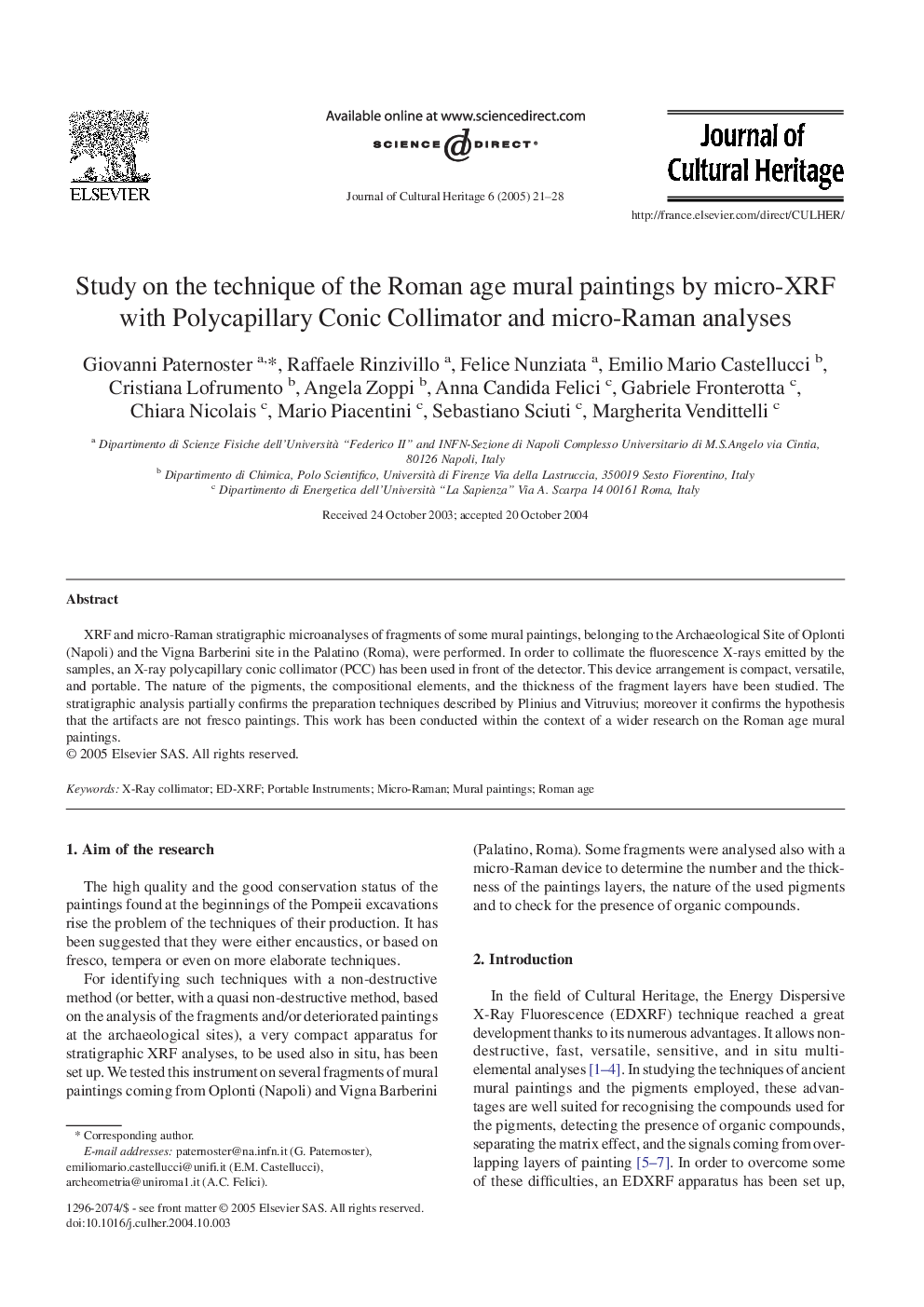| Article ID | Journal | Published Year | Pages | File Type |
|---|---|---|---|---|
| 10500084 | Journal of Cultural Heritage | 2005 | 8 Pages |
Abstract
XRF and micro-Raman stratigraphic microanalyses of fragments of some mural paintings, belonging to the Archaeological Site of Oplonti (Napoli) and the Vigna Barberini site in the Palatino (Roma), were performed. In order to collimate the fluorescence X-rays emitted by the samples, an X-ray polycapillary conic collimator (PCC) has been used in front of the detector. This device arrangement is compact, versatile, and portable. The nature of the pigments, the compositional elements, and the thickness of the fragment layers have been studied. The stratigraphic analysis partially confirms the preparation techniques described by Plinius and Vitruvius; moreover it confirms the hypothesis that the artifacts are not fresco paintings. This work has been conducted within the context of a wider research on the Roman age mural paintings.
Related Topics
Physical Sciences and Engineering
Chemistry
Physical and Theoretical Chemistry
Authors
Giovanni Paternoster, Raffaele Rinzivillo, Felice Nunziata, Emilio Mario Castellucci, Cristiana Lofrumento, Angela Zoppi, Anna Candida Felici, Gabriele Fronterotta, Chiara Nicolais, Mario Piacentini, Sebastiano Sciuti, Margherita Vendittelli,
